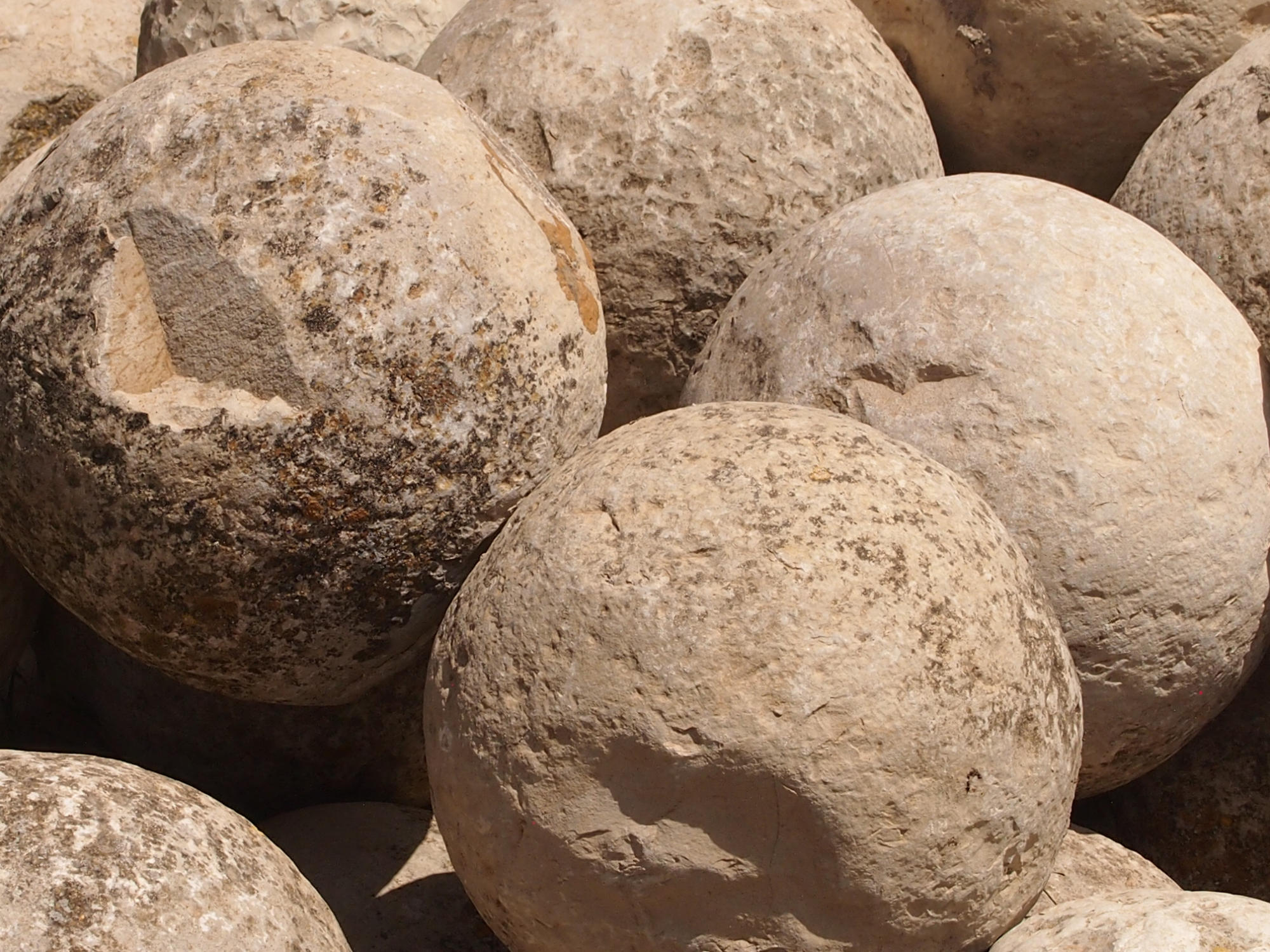
A idade das pedras varia de 4500 a 3600 anos.
Acredita-se que as bolas de pedra datam de um antigo jogo de tabuleiro grego.
Segundo arqueólogos de Universidade de Bristolmisteriosas bolas de pedra descobertas em muitos assentamentos antigos nos mares Egeu e Mediterrâneo podem ser peças dos mais antigos jogos de tabuleiro já criados.
Essas bolas foram descobertas em locais em Santorini, Creta, Chipre e outras ilhas gregas. Tem havido muitas teorias sobre seus possíveis usos, inclusive para arremessar pedras, arremessar bolas, sistemas de contagem/manter registros ou como contadores/peões.
A mesma equipe de[{” attribute=””>University of Bristol previously conducted research that indicated there was size variation among certain clusters and collections of spheres. The researchers then intended to investigate any possible patterns within these sphere concentrations to help shed light on their potential use.
Dr. Christianne Fernée and Dr. Konstantinos Trimmis of the University of Bristol’s Department of Anthropology and Archaeology recently published a study that examined common characteristics on 700 stones that were discovered at the Bronze Age town of Akrotiri on the island of Santorini. The stones’ ages ranged from roughly 4,500 to 3,600 years old.

The kernos (slab with cup marks) at the square of the House of the Benches and an interpretation of how the spheres could be associated. Credit: Konstantinos Trimmis
The stones, which are smaller than golf balls, are in various colours and made from different materials. The analysis put the stones into two groups of larger stones and smaller. In addition, in Akrotiri and in other settlements across the Aegean there are stone slabs with shallow cup marks where the spheres could have sat or been placed.
Dr Ferneé said: “The most important finding of the study is that the speres fit two major clusters (one of smaller and one of larger stones). This supports the hypothesis that they were used as counters for a board game with the spheres most possibly have been collected to fit these clusters rather than a counting system for which you would expect more groupings.”

Stone slabs with cup marks (kernos) and their Reflectance Transformation Imaging analysis. Credit: Konstantinos Trimmis
If these spheres are in-fact part of a boardgame, they will be one of the earliest examples, along with similar examples from the Levant and Egypt, such as the Egyptian Mehen and Senet.
Dr Trimmis added: “The social importance of the spheres, as indicated by the way they were deposited in specific cavities, further supports the idea of the spheres being part of a game that was played for social interaction. This gives a new insight into the social interaction in the Bronze Age Aegean.”
The next stage of the research is to apply a similar methodology to the slabs to see if there is clustering in the cup marks and trying to associate the spheres and slabs together. The team also hope to use artificial intelligence techniques to determine how the game was actually played.
Reference: “The rolling stones of Bronze Age Aegean: Applying machine learning to explore the use of lithic spheres from Akrotiri, Thera” by Christianne L. Fernée, and Konstantinos P. Trimmis, 9 September 2022, Journal of Archaeological Science: Reports.
DOI: 10.1016/j.jasrep.2022.103615

“Aficionado por música. Jogador. Praticante de álcool. Leitor profissional. Estudioso da web.”


